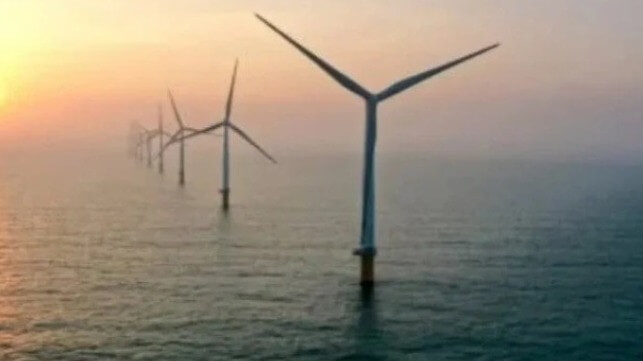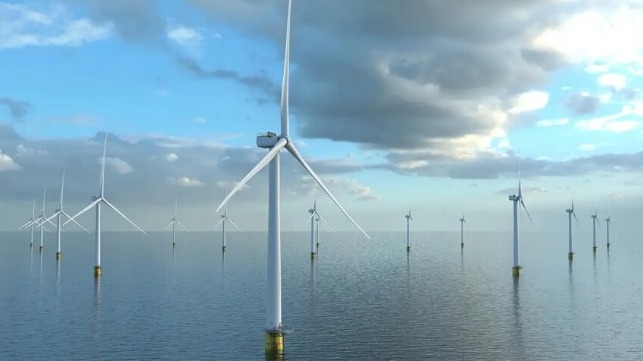Central Atlantic Environmental Assessment Released Preparing for Wind Sale

The Bureau of Ocean Energy Management (BOEM) continues to move at a fast pace to advance the U.S. offshore wind energy sector. Today it is announcing the availability of its final Environmental Assessment for potential offshore wind development off the Delaware, Maryland, and Virginia coasts collectively known as the Central Atlantic region.
The proposal for the offshore wind lease sale for two areas along the Central Atlantic was announced in mid-December 2023. In January and February, BOEM first released its draft of the environmental impact and then ren the mandated public comment period. The review concluded that there would be no significant impacts from lease issuance after reviews including a site assessment and site characterization activities such as geophysical, geological, and archaeological surveys.
The next step in the process would be publishing a final sale notice at least 30 days prior to the proposed auction. BOEM reports that it plans to hold the sale for the Central Atlantic region later this year.
“BOEM is proud to continue to support the clean energy transition in a responsible manner in the Central Atlantic region,”?said BOEM Director Elizabeth Klein. She highlights the approval of the nation’s first eight commercial-scale offshore wind energy projects along with four offshore wind lease auctions, conducted since the Biden administration took office in 2021.
The initiative is mapping out two parcels in the Central Atlantic. The areas include one approximately 26 nautical miles from the Delaware Bay that would potentially serve Maryland and Delaware. The second is 35 nautical miles from the mouth of the Chesapeake Bay to serve Virginia.
Work has already commenced last month on the first wind farm in the region. Dominion Energy has begun offshore work for its wind farm which will be offshore from Virginia Beach and is the largest wind farm so far in the U.S. Once complete in late 2026, Coastal Virginia Offshore Wind will consist of 176 turbines with a capacity of 2.6 GW.
The Department of the Interior defined a total of four areas within the zone of 20 to 60 miles of the coast ranging from Delaware in the north to North Carolina in the south as possible areas in the Central Atlantic. They also targeted two large zones further offshore into the Atlantic for possible future consideration.
In April, they mapped out a new five-year offshore wind leasing schedule, which includes up to 12 potential offshore wind energy lease sales through 2028. The leasing schedule includes four potential offshore lease sales in 2024, one each in 2025 and 2026, two in 2027, and four in 2028. Since then, they have also completed an environmental assessment in the Gulf of Maine and proposed sales for the Gulf of Maine and off the coast of Oregon.
The Gulf of Maine Wind Energy Area proposal would include eight lease areas offshore Maine, Massachusetts, and New Hampshire, totaling nearly one million acres, which have the potential to generate approximately 15 GW of renewable energy. The proposed lease sale in Oregon includes two lease areas totaling 194,995 acres, one in the Coos Bay Wind Energy Area and the other in the Brookings Wind Energy Area. The proposals for Oregon continue to face strong opposition from local groups.
The Department highlights it has approved more than 10 gigawatts of energy from offshore wind projects, enough to power nearly 4 million homes. It is moving forward with the goal of having 30 GW of offshore wind energy capacity by 2030 although many experts believe the setbacks in 2023 mean it is unlikely the goal can be reached on schedule. The department is also looking to advance floating offshore wind as part of the second phase of the industry’s development.
New York Finalizes New Power Agreements for Two Large Offshore Wind Farms

New York State finalized new power contracts for two offshore wind farms, Empire Wind 1 and Sunrise Wind, which had previously been placed in jeopardy when their developers said that rising costs had made the projects uneconomical for development. The signing of the new contracts puts the two mature projects back on track and helps to jumpstart New York State’s offshore wind sector.
Empire Wind 1 is a planned 810-megawatt project to be developed by Equinor 15 miles south of New York, while Sunrise Wind is a planned 924-megawatt project to be 30 miles to the east in a joint venture between Ørsted and Eversource. Eversource however has agreed to sell its interests to Ørsted. Both projects were originally awarded by NYSERDA in 2019 as part of the state’s first offshore wind solicitation. The original contracts set the strike price at approximately $118 per megawatt-hour for Empire Wind 1 and $110 for Sunrise Wind.
The projects had sought to renegotiate their contracts in 2023 but the regulator New York State Energy Research and Development Authority (NYSERDA) refused. In a hastily arranged fourth solicitation, New York reopened the wind for the projects on the condition cancel their existing contracts and rebid, but they were ultimately selected. New York Governor Kathy Hochul reports the weighted average all-in development cost of the contracted offshore wind projects over the life of the contracts is now $150.15 per megawatt-hour, which she asserts is on par with the latest market prices. It is however still below the $160 that the developers had asked for last year in the negotiations for Empire Wind 1.
The governor emphasizes that the new agreement put the two projects back on track to power over one million homes. She states that the average bill impact for residential customers over the life of these projects under these awards will be approximately two percent or about $2.09 per month. They will be the largest power generation projects in New York State in over 35 years once they enter operation. Equinor plans to bring in a partner before completing a financial close by the end of the year and targeting first power by late 2026.
As part of the new contracts, the projects also agreed to an additional $32 million committed to community-focused investments and $16.5 million towards wildlife and fisheries monitoring. They must also purchase at least $188 million of U.S. iron and steel and reach a labor agreement for operations and maintenance services.
Both of the projects are mature having already completed most federal and state permitting milestones. To support the wind farm’s connection to New York’s electric grid, onshore construction relating to the Sunrise Wind project is already underway, having received approval for its proposed onshore cable route on Long Island in November 2022. Empire Wind 1 achieved a critical milestone last month when the New York State Public Service Commission approved the project’s plan to connect to New York’s electric grid. Work is underway to transform the South Brooklyn Marine Terminal into a state-of-the-art staging and assembly port and long-term operations and maintenance hub for project developer Equinor.
Restarting these two projects is critical to New York’s plans for renewable energy. In April, NYSERDA announced it was not awarding contracts from the third-round solicitation citing technical and financial considerations which they linked to GE Vernova’s decision not to manufacture the larger turbines on which the projects were based.
NYSERDA began in April seeking input for a fifth wind solicitation. It is expected to launch by summer 2024.
No comments:
Post a Comment